
From Evolution Theory to a New Creation Theory -- Errors in Darwinism and a Proposal from Unification Thought

Under the Supervision of Sang Hun Lee
|
|
From Evolution Theory to a New Creation Theory -- Errors in Darwinism and a Proposal from Unification Thought |
|
|
|
Under the Supervision of Sang Hun Lee |
III. A New Theory of Creation Based on Unification Thought
1. The Purpose of Creation and Dual Purposes: Living beings are fit for existence, but at the same time they exist for human beings.
Darwin advocated the theory of natural selection; but do living beings indeed exist solely on the basis of fitness for existence? If so, do we now have, as a result of that, the kind of natural world in which only weeds and insects with a strong power of survival and multiplication abound? No ;that is not at all the case. In reality, beautiful flowers bloom, sweet fruits ripen, and birds are singing sweetly. How can these facts be explained?
God created human beings and all things in order to love them and be pleased. Seen from the side of the creatures, the purpose of human beings is to please God, and the purpose of the existence of "all things" is to please the human being. The purpose of "all things" will be fulfilled by accomplishing the purpose for the individual and the purpose for the whole.
The purpose for the individual refers to seeking one's own existence, multiplication, and maintenance; and the purpose for the whole refers to existing for the beings that are higher than oneself. In other words, the "purpose for the whole" of all things is to exist for the higher living beings, especially the human being. For this reason, all living beings exist as beings with dual purposes, which are the purpose for the individual and the purpose for the whole (see Fig. 14).
Consider the marvelous tail feathers of a peacock. According to evolutionists, the purpose of the peacock's tail feathers is to enable it to engage in the courtship of the peahen. However, from the viewpoint of Unification Thought, the peacock's tail feathers do not exist only for courtship behavior: Courtship behavior is the peacock's purpose for the individual, but more essentially, the beautiful tail feathers exist in order to please human beings (the peacock's purpose for the whole). Apples and oranges have a fleshy, succulent part; watermelons contain sweet juice, especially in hot, mid-summer days ;coconuts in the tropical zone store nutritious water within. For what purpose do they exist? Evolutionists would say that these fruits are fit for being eaten by animals and people for pleasure, so that their seeds may be sown around the ground and they may multiply. Of course, that is true in one respect ;but if they were intended for the plants' multiplication alone, then, why not have only seeds without flesh, which can be easily blown away and spread around by the wind? Essentially, these fruits exist for the sake of human beings.
Colorful flowers, lovely bird songs, beautiful patterns on a butterfly's wings, and other lovely things in nature surely have an aspect profitable for their own existence and multiplication; more fundamentally, however, they are intended to please human beings.
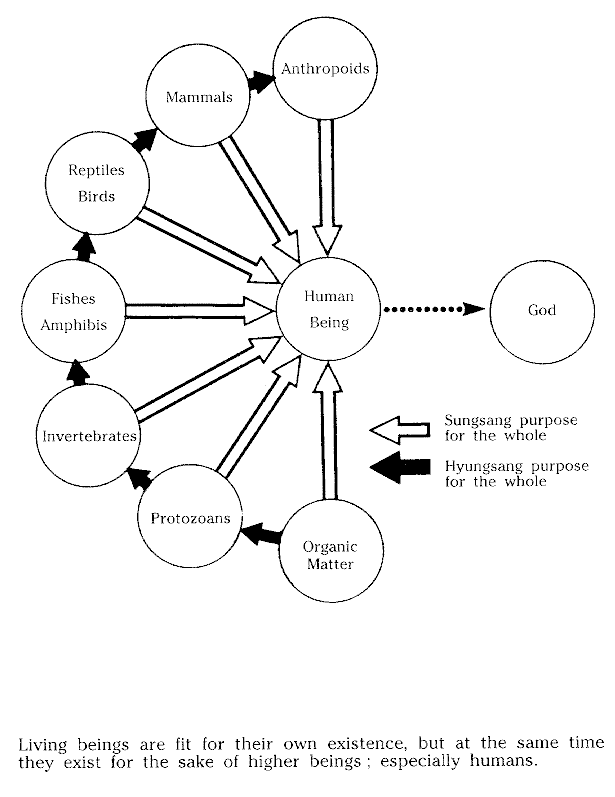
Fig. 14: The Dual Purposes of Created Beings
Neo-Darwinism discusses living beings by looking at them from the viewpoint of the purpose for the individual. Neo-Lamarckism focuses on how a species adapts itself to the environment; there, too, the viewpoint is still the purpose for the individual.
Unification Thought does not deny the survival of the fittest, which is advocated by evolutionists. However, that is only one aspect of the existence of living beings. When we understand that living beings not only are fit for existence but essentially exist for the sake of human beings, only then can we have a correct view of nature.
2. Creation through Logos: The genetic code of DNA represents the Logos of God.
Each of the living beings is created according to a certain design; yet, evolutionists claim that it was natural selection that created that design. According to Darwin, "it may be said that natural selection is daily and hourly scrutinizing, throughout the world, every variation, even the slightest; rejecting that which is bad, preserving and adding up all that is good; silently and insensibly working . . . at the improvement of each organic being" (Darwin 1968, 133). Dobzhansky compared natural selection to a composer; Simpson, to a poet; Mayr, to a sculptor; and Huxley, to Shakespeare. For Gould, natural selection has taken the place of the Creator: "The essence of Darwinism lies in its claim that natural selection creates the fit" (Gould 1977, 44)
In 1802, Archdeacon Paley [the English theologian and philosopher, William Paley] set out to glorify God by illustrating the exquisite adaptation of organisms to their own appointed roles .... Modern evolutionists cite the same plays and players ;only the rules have changed. We are now told, with equal wonder and admiration, that natural selection is the agent of exquisite design. (Gould 1977, 103)
The essence of Darwinism is this: It has denied God, the Creator, and has replaced Him with natural selection. This reminds one of Marxism, which also denies God, claiming that the human being is determined by material relations of production. The conclusion of both of these systems is that it was the material environment, rather than God, that created human beings.
In contrast to the evolutionists' claim, Unification Thought asserts that God designed living beings. God's design refers to Logos. God made Logos dwell within the cell, so that the cell might grow according to Logos. The Logos that dwells within the cell is nothing but the genetic code of DNA (see Fig. 15).
Then, which of the two is a more reasonable and natural way of thinking: (1) the interpretation that natural selection designed living beings, or (2) the interpretation that behind nature there is an artist-like being, or a scientist-like being (namely, God), who designed them?
Natural selection, originally, was the action of judging which one, out of many variations, was fit for existence. Therefore, natural selection can select an improved design; but that is quite different from claiming that natural selection can create or improve or designs. Nevertheless, evolutionists have given natural selection, which is only the action of selecting, even the role of creating or improving designs.
The beautiful feathers of a peacock would be explained by the evolutionists as follows: "The selection of charming peacocks by peahens made peacocks the most wonderful birds at present." However, peahens are not artists ;not is it possible for peahens to continue to select peacocks until beautiful feathers are formed.
Fig. 15: God's Logos dwells in DNA
All that the peahens can do is be attracted to the beautiful feathers of the peacocks.
Thus, there is a logical leap or switch in the theory of natural selection. Therefore, it is much more natural to consider that it was God who created the designs of living beings. Sakyo Komatsu, a Japanese science-fiction writer who wrote essays on biology, frankly said that he could not but think of creation by God when he saw the colorful patterns of butterflies
The splendid, intricate, and diversified patterns of colors of Lepidoptera, of tens of thousands of kinds, displaying innumerable variations of colors and patterns, seem beyond the human power of imagination and creation. In the end, I am drawn back to the "greatness of the Creator" and to the "providence of God." Am I the only one to feel that way? (Komatsu 1982, 79)
3. Creation by Stages: Abrupt changes have occurred through the action of God's power.
As we have seen, there are serious difficulties in Neo-Darwinism's view that species are changed by natural selection. On the other hand, Neo-Lamarckism asserts that species are changed in correspondence with changes in the environment. However, Neo-Lamarckism seeks to clarify only such things as the acquisition of tolerance or immunity to medicines, which are low-level changes, hardly of the kind that can lead to change to a different species.
From the viewpoint of Unification Thought, everything has both identity-maintaining and developmental aspects. In other words, a living being maintains its self-identity as a species, and at the same time changes and develops in correspondence with changes in the environment. In other words, a species can change, yet it still remains the same species. In the end, both Neo-Darwinism and Neo-Lamarckism have magnified their interpretation of variations within a species (which are naturally to be expected) to cover even changes of species, concluding that the species itself undergoes change.
One has to recognize, however, that, in order for a species to undergo change in shape and function to such an extent that it becomes an altogether different species, some creative input must be applies to it. According to Unification Thought, when a new species is created, God's power works to bring about an abrupt change. In such an occasion, God causes an abrupt change according to Logos (blueprint). How is that carried out? In biological terms, this matter relates to the rearrangement of the genetic code, or to a change in the program of the genetic code.
From molecular biology it is now known that viruses carry genes among cells, individual bodies, or species. The Japanese geneticist Hideomi Nakahara and the Japanese theoretical physicist Takashi Sagawa consider that manipulation of the genetic code by viruses, which can be called artificial selection of the contemporary period, actually occurred in the natural world, advocating the "virus theory of evolution." They say that the original function of a virus lies, not in causing illnesses, but in transporting or mixing genes, transcending the confines of species (Nakahara and Sagawa 1968, 158-60).
The famous British astronomer Fred Hoyle and his research coworker Chandra Wickramasinghe have developed the unique theory that life has come from space. They assert that great quantities of fragments of genes fell from space, and that, by taking in these fragments, living beings have reconstructed their own bodies. At that point, viruses also served in the role of spreading the reconstructed programs to the entire group of individuals (Hoyle and Wickramasinghe 1981, 99-116).
Nakahara's and Sagawa's theory, which asserts that viruses manipulate genes, and Hoyle's and Wickramasinghe's theory, which asserts that fragments of genes have come down from space and that living beings have taken them in, have some content that scientifically backs up the Unification Thought theory of creation. The reason is that one could think that God changed the programs of organisms through such means. But the "virus theory of evolution" has not been fully verified yet, and the theory that "life came from space" is nothing but a hypothesis.
Let us cite another example. I hear that the diseases that are controlled by genes, such as Brocq's disease -- which "is characterized by the malfunction of the sebaceous and sweat glands, resulting in excessive growth of the epidermis (the outer layer of the skin) so that a dark, horny covering develops like the scales of a primitive fish"-and congenital pachyonychia ("an almost hoof-like enlargement of the nails and feet") were cured by hypnotic treatment. Lyall Watson, introducing these cases, said, "There has been direct and external influence brought to bear on strictly genetic mechanisms. Mind stalks, it seems, even the sacred hunting grounds of molecular biology" (Watson 1979, 187-88). This may be another example indicating that God could work on genes. At any rate, a clarification of how God has rearranged genes and changed programs in organisms is a problem to be solved in the future-but the day will come when this question will be clarified through the results of scientific research.
The view of Unification Thought is this: God's power worked, whereby the programs of the genes were changed, and a new species was created. In this case, the old species did not necessarily perish. After a new species appeared, still many of the old species remained as they had been before. (Only the organisms required in the process of creating the new species perished as the new species appeared; this will be further explained below.)
Unification Thought holds also that creation took place, not in a continuous way, but by stages. Creation took place in the following way: God's power worked, whereby a certain species was created ;after that, a certain period of time passed-which could be called a growth period, or a preparation period-and again God's power worked, whereby a new species was created. We call this process "creation by stages" (see Fig. 16).
The theory of "creation by stages" advocated by Unification Thought may superficially look like Gould's "theory of punctuated equilibrium." But the theory of punctuated equilibrium claims that species evolve by mutation and natural selection in a small, isolated group ;therefore, Gould's theory is essentially the same as Darwinism and fundamentally different from Unification Thought's theory of creation.
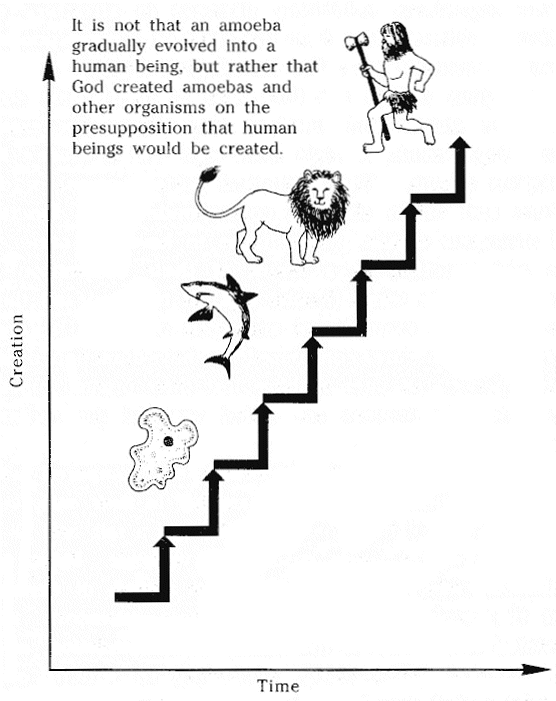
Fig. 16: Creation by Stages according to Unification Thought
4. Creation in Likeness: All living beings were created taking the human being as a model.
a. On the Evidence for Evolution in Morphology and Embryology
Authors of biology textbooks, when presenting what they regard as evidence for evolution, often include homologous organs, analogous organs, and vestigial organs in morphology as well as the theory of recapitulation in embryology. The organs of different organisms exhibiting likeness in structure due to evolutionary differentiation from the same or a corresponding part of a remote ancestor are called homologous organs.
Homologous organs are the same in their basic structure, though their shapes and functions may differ. For example, a human being's hands, a dog's front legs, and a whale's fins are homologous organs. The anatomical parts (organs) of different structure and origin showing correspondence in function are called analogous organs. (They came to have the same external shape and function as a result of their adaptation to the environment.) The wings (frontal legs) of the bird and the wings of the insect are examples of analogous organs. The organs of living beings that are considered to have functioned in their ancestral period but later to have lost their original functions in the evolutionary process are called vestigial (or rudimentary) organs.
When the embryos of vertebrates are compared with one another, all of them resemble one another in their early stages of development: All of them have gill slits and a tail, and all have a fishlike heart with a single atrium and ventricle. Based on that, evolutionists claim that embryos, in the course of development, repeat the evolutionary history of their ancestors in some abbreviated form. This is the theory of recapitulation, advocated by E. Haeckel (1834-1919), according to which "ontogeny recapitulates phylogeny."
Concerning this alleged evidence for evolution, many questions and refutations have been raised. Concerning homologous organs, Hitching raises the following question:
This latter [the tetrapod limb in vertebrates] is a classic textbook example of nature persuading one structure to do several jobs. Why should the legs of a horse, the wing of a bird, the arm of a man, and the flipper of a whale all be built the same way when serving quite different purposes? If the fittest adaptation were chosen by a gradual accumulation of mutations, you would have expected an organ used for flying and a organ used for running to have finished up-or even begun-looking totally dissimilar. (Hitching 1982, 149 -50)
Concerning analogous organs, the origin of their resemblance is still unknown. About this point, Komatsu says,
In the world of organisms, likeness often can be found in form and behavior among very remote species ... The inquiry into the cause of the likeness seen among remote species seems to be left far behind, partly because it is an extremely ambiguous matter, in a sense. (Komatsu 1982, 61-62)
Concerning homologous and analogous organs, B. C. Nelson said, from the Christian creationist position, that the likeness of these organs can serve as evidence for creation as much as it can serve as evidence for evolution.
Similarity in itself proves evolution no more than it proves creation. To the believer in the Bible the similarity of structure in living organisms merely establishes the fact that there was one Great Architect, or Creator, who, when He was about to build many of His species, had in mind one plan or pattern, and this He used for as many creatures as possible with such modifications of the general plan as were necessary for different conditions of existence. (Nelson 1967, 20)
Nelson also said that there are no such things as vestigial organs.
It is certainly not reasonable that the Creator would put into any one of His creatures parts that are absolutely of no use to it. Certainly He would not put in detrimental parts ... If a part serves any function whatever, whether it is only in the embryonic period, in the years of childhood growth, or later, that part is useful and cannot reasonably be considered a proof of evolution. (Nelson 1967, 42)
Nelson also mentioned that there are certain organs, the reason for whose existence was formerly unknown. Yet, with the progress of medical science, the functions of these organs have come to be known, and therefore, he said, they can no longer be called vestigial organs.
The theory of recapitulation has also been questioned. Often cited as evidence for the theory of recapitulation are the embryonic gill slits in human embryos, supposedly showing the fish stage of our ancestry (see Fig. 17). But according to Hitching, these are pharyngeal pouches rather than gills as such. In fish, they turn into gills; in mammals, into glands. "They seem, in fact, to be simply an essential and predictable stage of growth common to living embryos before they diverge on their genetically preordained pathways," Hitching says (Hitching 1982, 174).
In this way, there are various problems in what is claimed to be evidence for evolution in morphology and embryology. Nevertheless, those claims continue to be included in all textbooks of biology, as before.
b. The View of Unification Thought: Creation in Likeness
According to Unification Thought, the human being is an image-ike substantial object of God, and all things are symbolic substantial objects of God. In other words, the human being has been created to express God's nature and image completely; and all things have been created to express them symbolically. To put it another way, the human being has been created in the likeness of God, and the rest of creation has been created in the likeness of the human being. This is called "creation in likeness."
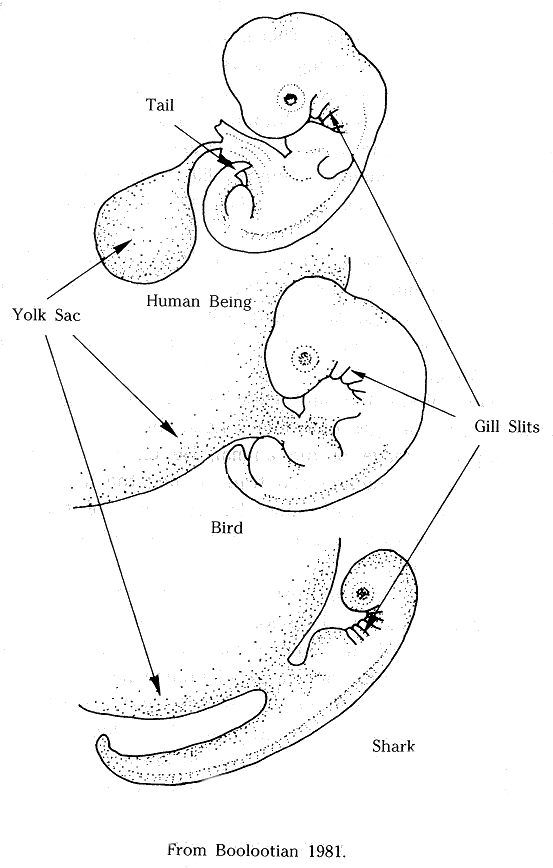
Fig. 17: Early Embryos of Shark, Bird and Human Being
God created human beings as His objects in order to love them and be pleased, and created all things as objects of human beings, in order to please human beings. Accordingly, the purpose for which the rest of the creation was created is to serve as the environment for human life and to be the material for human life, as well as to be human beings' object of love and care (see Fig. 18).
In the beginning, God conceived in His own image the image of the human being to be created. The image of the human being means the design of human being. And taking that image as the model, God conceived each one of all things by abstracting and transforming the human image.
First, God abstracted and transformed the image of human being making the images of animals; next, through abstracting and transforming the image of the animal, He created the images of plants. Through abstracting and transforming the image of plants, He created the images of minerals. And out of the image of minerals, He created the images of molecules, atoms, and elementary particles.
Animals and plants are expressions of the image of human being's form and nature. Therefore, individual animals and plants are simplifications of the human form and nature, or emphatic expressions of the form and nature of human parts.
The aim is for human beings to feel their special characters objectively and to obtain joy through those living beings. For example, a lion, which is the king of beasts, was created to symbolize dignity; and a sheep, to symbolize obedience.
Seen from the viewpoint of creation in likeness, it is clear that homologous and analogous organs are not an evidence for evolution. Since organisms were created in the likeness of a human being, it is natural that there should be resemblance among living beings (see Fig. 19). The likeness in the growth of the embryos of various kinds of organisms does not prove the footprint of evolution. When we say that living beings were created in the likeness of a human being, we imply that the process of growth of each one of them is also modelled after the process of growth of the human embryo. Therefore, the process of growth of the human embryo is a synthesis of the processes of growth of all other organisms' embryos (see Fig 20).
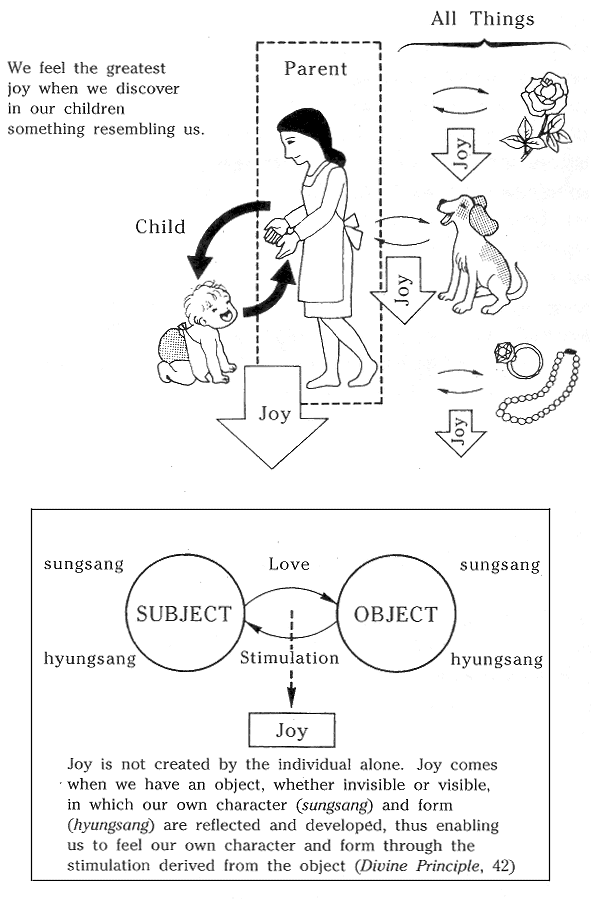
Fig. 18: Objects of Joy Seen from the Viewpoint of Human Being
As for the gill slits, they are not the remains of the fish stage of the evolution process. The embryo of a fish simply looks like an early human embryo. And the part that is to develop into glands in humans, is transformed into gills in the case of a fish.
As for the vestigial organs, the coccyx, for example, is not a degeneration of the animal tail. Instead, the animal tail was created by prolonging the human spinal column. The "movable ear conch muscle" in the human ear is not something that has degenerated, either. The ears of certain kinds of animals were created so as to move quickly by expanding some part of the ear muscle of the human being.
In this way, the examples cited as evidence for evolution are, instead, what proves creation in likeness, centered on the human being. The human being looks like an ape, not because humans evolved from the ape, but instead, because the ape, which was created in the likeness of human beings, looks like a human being.
According to the Christian theory of creation, all the created beings were created in the likeness of God; yet, the relationship between humans and all the rest of creation has remained unclear. Seen from the viewpoint of Unification Thought, the human being was created in the likeness of God, as God's object of joy; and the rest of creation was created in the likeness of the human beings, as human beings' object of joy. Based on this view of Unification Thought, a valid alternative theory to evolutionism can be presented.
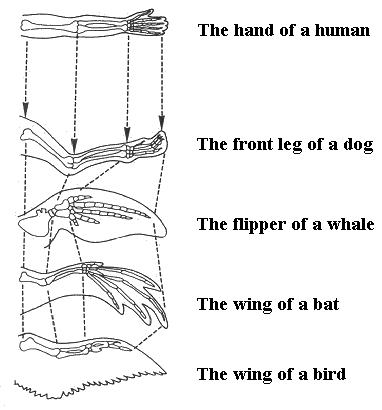
Fig. 19: Homologous Organs Showing Creation in Likeness Centered on Human Being
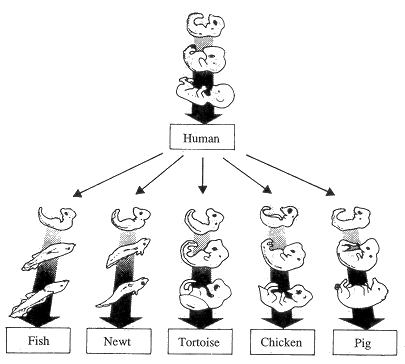
Fig. 20: Ontogeny Indicating Creation in Likeness Centered on Human Being
5. The Two-Stage Structure of Creation: Within the concept of God, the human being was created first.
As mentioned above, the image of human being was conceived within the mind of God as His direct object of love. As it is written, "God created man in his image" (Genesis 1), which means that the human being was conceived within the mind of God in God's own image, as the most perfect being. Taking the human image as a model, and by abstracting and transforming it, God conceived the images of animals ;by further abstracting and transforming them, He conceived the images of plants. Even among animals, He first conceived the images of higher animals, which are closer to humans, and by abstracting and transforming them, He gradually conceived the images of lower animals. Among the images of plants, He also conceived the images of higher plants first, and then gradually the images of lower plants. At the extreme end of the process of abstracting and transforming the images of animals and plants, God conceived the image of a cell. The cell was conceived as the smallest unit of all living beings.
Next, God conceived the earth as the dwelling place of humans and other living beings, as well as the universe that sustains the earth. By abstracting and transforming the images of animals and plants, God conceived the images of heavenly bodies in His own mind. He also conceived the images of minerals as the material with which to build the heavenly bodies. Through further abstraction and transformation, God conceived the images of a molecule, an atom, and an elementary particle. These were conceived as the basic material with which to make the heavenly bodies, plants, animals, and human beings.
In this way, in God's mind, the ideas were formed in the following order: human being -> animals (higher animals -• lower animals) - plants (higher plants - lower plants) -• heavenly bodies - minerals -- molecules - atoms - elementary particles. Here "idea" refers to Logos (design, blueprint, conception).
The creation of the phenomenal world was carried out in exactly the reverse order: First, elementary particles, atoms, and molecules emerged. Those atoms and molecules were combined to form heavenly bodies, which consist of minerals. Then, the earth, a special planet among the heavenly bodies, was formed. On the surface of the earth, first plants emerged; then, animals; and finally, humans.
This dose not mean, however, that animals were created after all plants had been created. Rather, both the plant world and the animal world were created almost simultaneously and in such a way that creation proceeded from lower stage beings to higher stage beings. This is because plants and animals have a relationship of co-existence and co-prosperity. So, it is safe to say that the plant world was created just slightly ahead of the animal world.
Thus in creation, first came the formation of ideas (that is, the creation of Logos), which took place within God's mind ;and then came the creation of the phenomenal world, which took place according to Logos. This is called the "two-stage structure of creation" (see Fig. 21).
The process of God's creation, which took place through the two-stage structure of creation, can be summed up as shown in Figure 22, which is limited to animals and humans. When we see only the result expressed in the phenomenal world, evolution appears to have proceeded in the following order: from protozoans to invertebrates; from invertebrates to fish ;from fish to amphibia; from amphibia to reptiles; from reptiles to mammals; and from mammals-via anthropoids, ape-men, and early men-to present-day humans.
However, that was not evolution but rather creation carried out systematically, according to Logos.
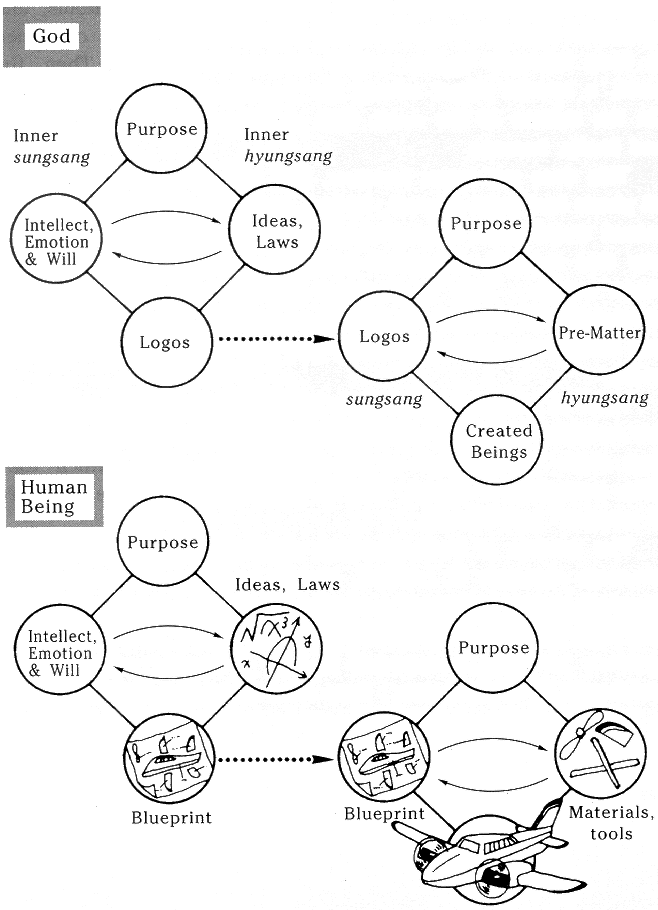
Fig. 21: The Two-stage Structure of Creation
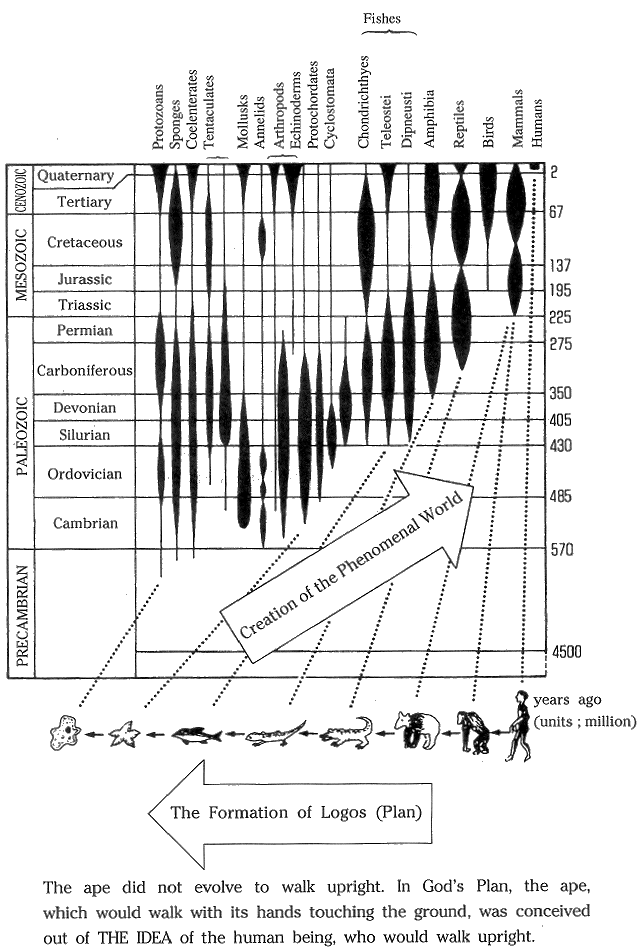
Fig. 22: The Formation of Logos and the Actual Order of Creation
6. The Creation of Human Beings Based on All Things as Material
The creation of all things was aimed toward the creation of human beings.
According to Christian fundamentalism, God created an adult man without a navel, literally "from the dust of the ground," instantaneously. Was it really so?
From the viewpoint of Unification Thought, all beings are to be perfected through a period of growth. Accordingly, they cannot appear in their perfected forms, instantaneously. Creation took place systematically and developmentally, beginning with something simple and gradually developing to higher and more complex things, taking the simple as material for the complex. In addition, creation took place in such an order that the environment was prepared first, and then living beings were formed in it. Therefore the human being, who is the ruler of all creation, was created last, after all the natural environment was made.
First, energy and elementary particles were formed. Elementary particles were combined to form atoms, and atoms were combined to form molecules. Elementary particles, atoms, and molecules were the materials for making the universe. And the earth, a particular planet in the vast universe, was formed.
The air surrounding the earth contains vapor, hydrogen, ammonia, methane, nitrogen, and so forth: the actions of ultraviolet rays and natural electric discharge (lightning) formed amino acids, the bases of nucleic acids, organic acids, and so forth. These were dissolved in the oceans, and formed a "soup of organic substances," as it is called. That was the very material from which cells were made. The organisms that appeared first were bacteria and blue-green algae, which are prokaryotic cells, that is, unicellular organisms without a distinct nucleus. And having those as materials, then appeared protozoans, or eukaryotic cells, which are unicellular organisms with a distinct nucleus.
Then, with unicellular organisms as the material, multicellular organisms were formed. About 600 million years ago, at the beginning of the Cambrian era, suddenly multicellular organisms (invertebrates) emerged in great numbers in the oceans. (The Biologists call that phenomenon "the explosion of the Cambrian era," or "the mystery of the Cambrian era") (see Fig. 23). The marine invertebrates that emerged in the Cambrian era can be regarded as having served as the material from which eventually the vertebrates were made. About the explosive phase of the Cambrian era, Gould said the following:
The long phase of the Cambrian filled up the earth's oceans. Since then, evolution has produced endless variation on a limited set of basic designs. Marine life has been copious in its variety, ingenious in its adaptation, and (if I may be permitted an anthropocentric comment) wondrous in its beauty. Yet, in an important sense, evolution since the Cambrian has only recycled the basic products of its own explosive phase. (Gould 1977, 133)
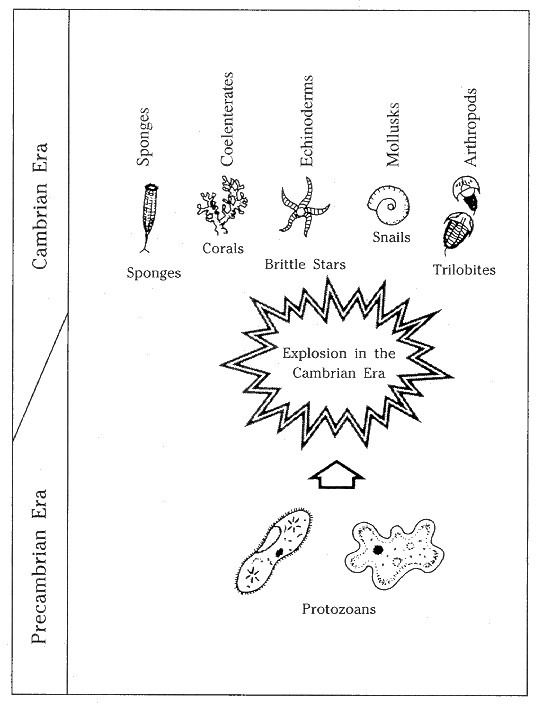
Fig. 23: Explosion in the Cambrian Era
With the marine invertebrates in the Cambrian era as the material, fishes, amphibia, reptiles and mammals were created. (Here, the phrase "with the marine invertebrates as the material," means "with the genes of marine invertebrates as the material.") And it can be seen that, on the basis of the anthropoid among mammals, the ape-man and early man were created; and on the basis of the early man, the human being (the physical aspect of human being) was created.
God created all things by investing all His power over a period of several billion years, and it was all for the creation of human beings. And with all things as the material, He created the human being (physical person). Yet, the human being is not merely a physical being. As it is written in the Bible, "the Lord God . . . breathed into his nostrils the breath of life" (Genesis 2:7), and man was given a spirit. The spirit was created with all the elements of the spirit world as the material. The spirit has almost the same appearance as the angel has, who already existed when man came into being. In this way, human beings, Adam and Eve, consisting of spirit (spirit person) and flesh (physical person) were created (see Fig. 24).
Here, let us consider about the Great Forest, the dinosaurs, and the early humans. The creation of all things was aimed toward the creation of human beings. Therefore, those things that were prepared as the environment for human life have remained until today as they were, but those that were required only for the course of creating the human being and for the course of creating the environment for human life disappeared when those courses passed. Since ape-men and early men were required only in the course of creating the human being, we can think that they disappeared when the human being was created. It can be said that the Great Forest in the paleozoic era completed its mission by forming the environment for gymnosperms and angiosperms, and that the dinosaurs in the mesozoic era completed their mission by forming the environment for mammals.
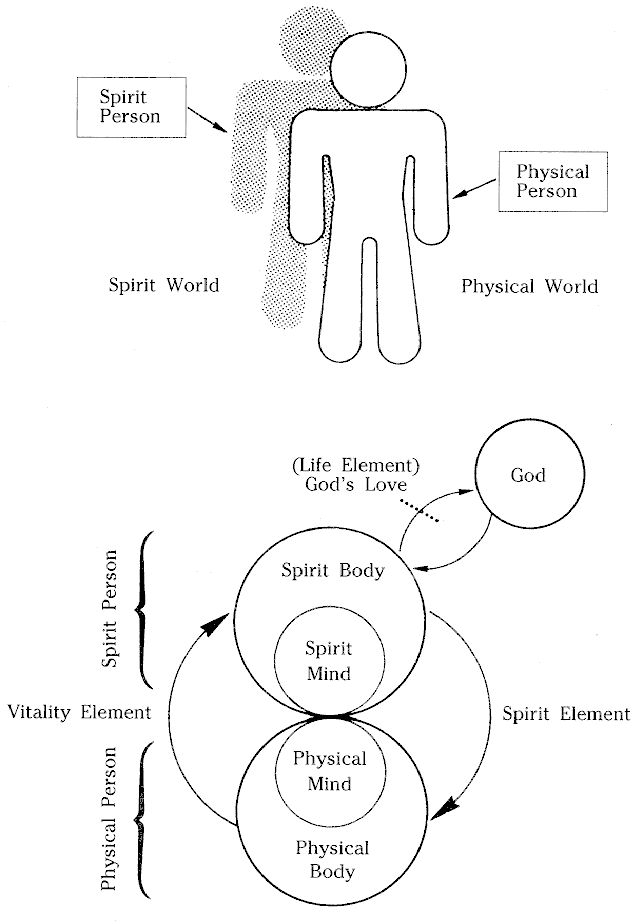
Fig. 24: The Human Being, Consisting of Spirit and Flesh
7. On the Theistic Theory of Evolution: Everything came about through God's creation, not through evolution.
Christian fundamentalism opposes the "theistic theory of evolution," which asserts that God used evolution as the means of creation. Duncan states the following:
Many good men, and scholarly men have held what is commonly called "theistic evolution." Many professors of science in Christian colleges, desiring to maintain their scientific standing and respectability, hold to theistic evolution. Theistic evolution teaches that God made the first bit of protoplasm and directed the course of evolution from then on . ... The Bible-believing Christians reject theistic evolution because it makes a literal interpretation of the Scriptures impossible. The Bible clearly states that man was made from the dust of the ground and that Adam was made in the image of God. (Duncan 1978, 88)
As for this matter, let us explain the position of Unification Thought. Unification Thought upholds creation by God, rejecting the theory of evolution. Yet, Unification Thought accepts as they are the scientific facts that have been clarified by geologists and anthropologists. Nevertheless, the Unification Thought way of interpreting those facts is different from that of the theory of evolution. The theory of evolution (Neo -Darwinism) asserts that living beings evolved through mutation and natural selection ;the new creation theory of Unification Though asserts, instead, that creation occurred through stages, from lower beings to higher beings, with the goal of reaching the human being. If one looks at the phenomenal consequence only, one might have the impression that things have evolved. Nevertheless, the real process was still not evolution but creation.
Unification Thought asserts clearly that the human being was created in the "image of God." The human being was created from the same elements as the minerals, plants, and animals. Therefore, man was created from the dust of the ground (the same material that composes the earth). Yet, Unification Thought does not agree with the Christian fundamentalist view that all living beings were created instantaneously six thousand years ago. Unification Thought sees that the record of creation in the Bible merely describes the process of creation, and that the numbers, six days and six thousand years, do not express a literal, exact period of time (see Fig. 25).
Unification Thought does not support or assert the theistic theory of evolution. What Unification Thought asserts is the true theory of creation.
8. The Creation of Adam and Eve: God's love is realized through Adam and Eve.
As written in the Bible, Unification Thought holds that God created Adam and Eve, who became the first human ancestors of humankind. In the Bible it is recorded that God first created Adam, and then Eve from a rib of Adam; however, the real meaning of this is not that God literally created Eve from Adam's rib, but rather that He created Eve according to a blueprint similar to that according to which He had created Adam.
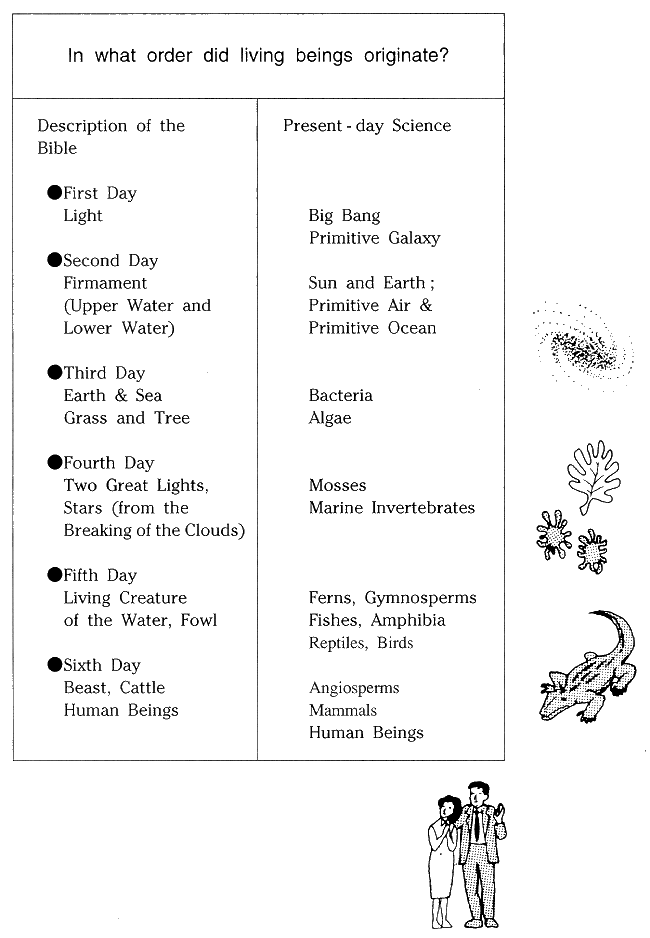
Fig. 25: The Creation of Heaven and Earth (as Described in the Bible), and the Generation of the Universe (According to Science)
Anthropologically, it is said that there were the stages of the ape-men (Australopithecus) and the early men (homo erectus) before human beings (homo sapiens) appeared. As already stated, Unification Thought holds that those beings were required in the course of creating human beings (as far as the human physical aspect is concerned). And even though the stages of ape-men and early men were traversed before reaching the stages of homo sapiens, nevertheless there must have been a great leap when human beings (i.e., Adam and Eve) were created. Also, we could say that Adam and Eve were entirely new creations, in that they were endowed with spirit.
At this point, let us discuss the significance of the creation of Adam and Eve from the standpoint of Unification Thought. One of the most intriguing and difficult problems in science is to explain how male and female came into being, and as to this question, the Reverend Sun Myung Moon said the following
If there is a most arcane mystery in the world of beings, it is that man and woman have come into existence, and that male and female in animals have come into existence. Furthermore, in the plant world there are stamen and pistil; and in the mineral world, there are cation and anion. In this way, everything has been made according to the pair system. Man and woman, male and female-the reason why things exist in this way is the mystery of mysteries. (Family 1991, 4-5)
Natural science seeks to clarify the causality of things. Therefore, natural science inquires into the cause of a particular phenomenon but cannot clarify the reason why that particular phenomenon has come into being. The question why male and female came into existence is related to the reason why of things; this is, therefore, not a question to be solved by biology, but rather a matter to be scrutinized by philosophy.
Seen from the viewpoint of Unification Thought, male and female came into existence, not because of evolution, but because they were created in the likeness of the Creator. This means that man and woman, male and female, stamen and pistil, cation and anion, and so forth-all of them came into being in that way because God, the Creator, possesses male and female characteristics. This point is expressed in Unification Thought in the following terms: "God is the united body (or harmonized body) or Yang and Yin."
Then, for what purpose do yang and yin (masculinity and femininity) exist? They exist for the purpose of love. If Adam and Eve had grown to be husband and wife centered on God, loving each other, God would have dwelt with them, and they would have fulfilled God's purpose of creation, namely, the perfection of love. Male and female in animals, stamen and pistil in plants, cation and anion in minerals were also created for the purpose of giving and receiving love, whereby unity is realized, even though their levels may be lower than that of human beings.
Download entire page and pages related to it in ZIP format
Table of Contents
Information
Tparents Home